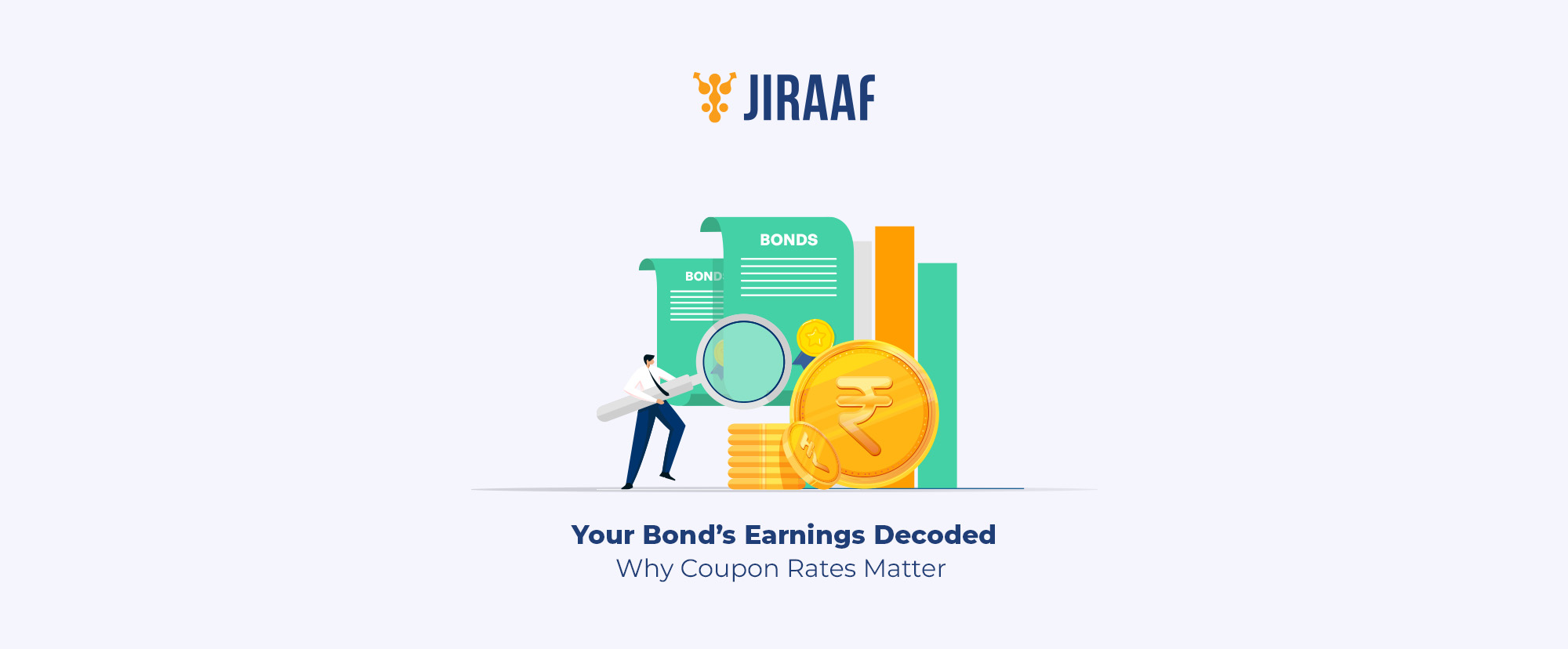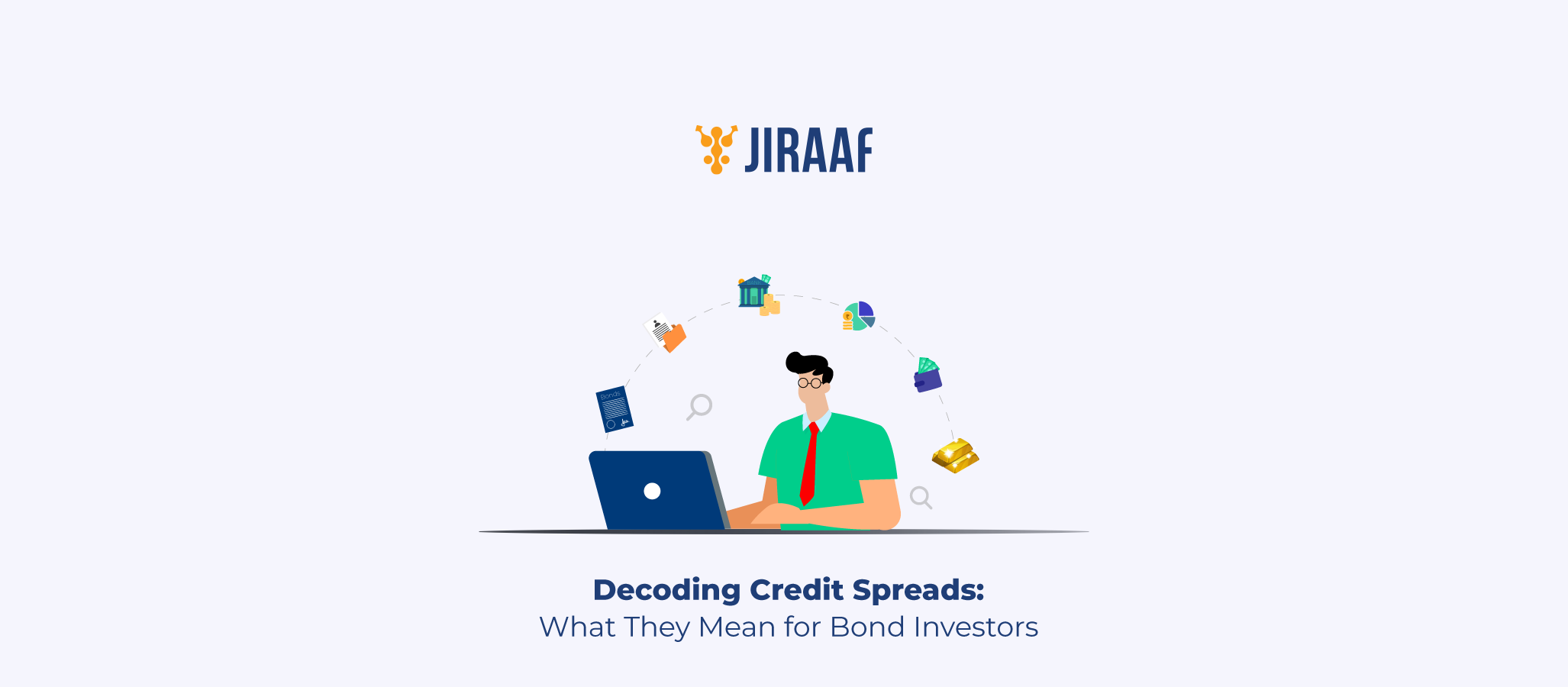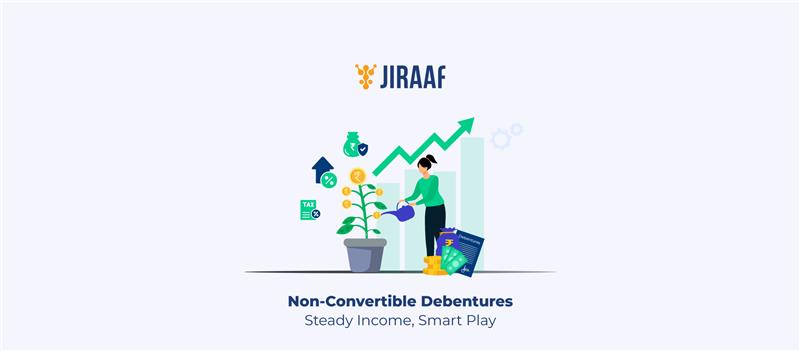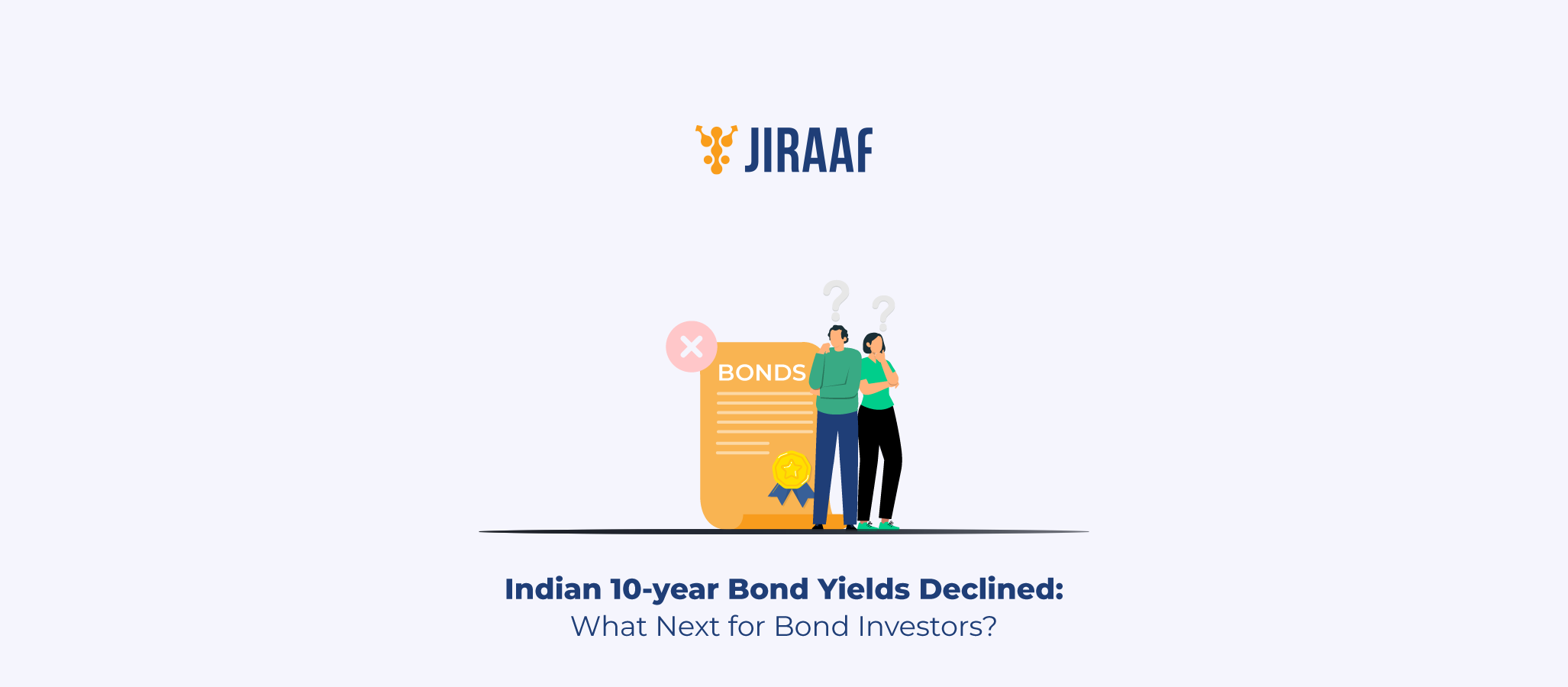The coupon rate is more than just a fixed interest payment—it’s the pulse of a bond’s income potential, directly shaping how much investors earn over time. As economic conditions fluctuate, the coupon rate determines whether a bond holds its appeal, compensating for inflation, market risks, or even investor sentiment. Grasping its nuances—how it affects pricing, impacts return and compares to yields—can provide a sharper lens for navigating the bond market strategically.
What is Coupon Rate?
The coupon rate is the annual percentage of interest paid on a bond’s face value, establishing the income stream for the investor. For example, if you hold a bond valued at ₹1,00,000 with a coupon rate of 6%, you’ll receive ₹6,000 in interest each year, usually paid semi-annually.
Unlike yields, which fluctuate with market price, the coupon rate in bond investments remains fixed upon issuance, representing the bond’s “sticker price” of income. This rate is key to a bond’s position in the market and serves two primary purposes:
- Income Generation: Investors rely on the bond coupon rate to forecast steady income. This aspect is particularly appealing to conservative investors and people who prioritize consistent returns.
- Market Positioning: The coupon rate helps investors gauge a bond’s income potential relative to other bonds, allowing for better comparisons of income levels, tax implications, and risk.
How is Coupon Rate Determined?
Issuers determine what the coupon rate of a bond should be by evaluating several economic and market factors, ultimately setting it to attract a balance of investor interest.
Factors that primarily influence the bond prices:
- Market Interest Rates: Central bank rates directly influence bond coupon rates and prices. When rates are high, bond issuers must offer competitive coupon rates to attract investors, as there are other high-return options. Conversely, in a low-rate environment, even bonds with lower coupons can appeal to investors seeking stability.
This relationship creates an inverse effect on bond prices: when interest rates rise, existing bonds with lower coupons lose appeal, leading to a drop in their market prices, and vice versa. This dynamic is essential for investors looking to align bond choices with interest rate trends
- Creditworthiness of the Issuer: When selecting bonds, consider the issuer’s credit rating.
High-rated issuers, like governments or AAA-rated corporations, typically offer lower coupon rates due to their stability and lower default risk, making them a safer choice. On the other hand, bonds from riskier issuers come with higher coupon rates as an incentive to offset the added credit risk. Assessing an issuer’s creditworthiness can help you balance income potential with risk tolerance, aligning with your investment goals.
- Bond Term or Maturity: Bonds with longer maturities generally feature higher coupon rates as a form of compensation for the extended period over which investors face market risks and gather potential interest.
How is the Coupon Rate of a Bond Calculated?
The coupon rate formula is straightforward:
Coupon Rate = Annual Coupon Payment/Face Value of Bond × 100
Suppose an investor purchases a bond with a face value of ₹1,00,000 that pays ₹7,000 annually. The coupon rate for the bond would be:
Coupon Rate = (7000/100000) × 100 = 7%
This formula helps compare income potential across bonds with varying face values or coupon payments.
The Role of Coupon Rate in Bond Valuation
The coupon rate has a direct impact on bond prices and capital market valuation, especially in the secondary market, with an inverse relationship existing between bond prices and interest rates.
When interest rates rise, bonds with lower coupon rates become less attractive, decreasing their price. On the other hand, when interest rates decline, bonds with higher coupon rates gain in value, as they offer better income compared to newly issued bonds with lower rates.
This relationship plays a significant role in bond investment strategy, especially for those who buy bonds for capital gains potential.
Fixed vs. Floating Coupon Rates
Bonds come with either fixed or floating coupon rates, each offering distinct advantages:
- Fixed Coupon Rate: This rate remains constant, providing a stable income stream regardless of market fluctuations. Fixed rates are ideal for investors who are looking for predictable returns.
- Floating Coupon Rate: Floating rates adjust periodically in response to a reference rate, such as the London Interbank Offered Rate (LIBOR) or the Treasury Rate. These bonds can capture income gains in a rising rate environment, though they may expose investors to more variability in returns.
Understanding the benefits and trade-offs of fixed versus floating coupon rates helps investors align bond choices with their income stability or market-responsive preferences.
How Coupon Rates Impact Investment Returns
The coupon rate plays a fundamental role in delivering steady income for bondholders, as it represents the fixed interest payment that the bond issuer provides each year based on the bond’s face value. This consistency appeals to income-focused investors, offering a predictable cash flow regardless of price fluctuations in the bond market.
For a fuller understanding of returns, comparing the Coupon Rate to Yield to Maturity (YTM) is helpful. While the coupon rate is fixed and paid annually, YTM reflects the bond’s overall return, factoring in the purchase price, coupon payments, and any gains or losses upon maturity.
For instance, buying a bond at a discount boosts the YTM, as you’ll earn both the coupon payments and additional profit at maturity. This distinction lets you gauge a bond’s total return potential more accurately, especially when comparing bonds with similar coupons but different prices.
Tax Implications of Coupon Payments
The tax treatment of coupon payments varies by bond type.
- Corporate Bonds: Coupon income here is generally taxed as ordinary income
- Municipal Bonds: Typically, the interest in this case is tax-exempt, appealing to those seeking tax-efficient income
- Government Bonds: Interest is taxable in most cases, though exemptions can apply, depending on jurisdiction
Tax implications often play a key role in bond selection, as they impact the coupon rate structure.
Examples of Bonds with Different Coupon Rates
Let’s examine real-world examples of bonds with different coupon rates:
High Coupon Rate Bonds
Emerging market or corporate bonds often offer higher coupon rates than government bonds to compensate for the elevated risks.
For example, a corporate bond issued by a company in an emerging market may have a coupon rate of 10%, which can appeal to those seeking wealth creation rather than preservation.
Low Coupon Rate Bonds
U.S. Treasury bonds, known for their stability and creditworthiness, generally offer lower coupon rates than riskier bonds. However, they’re widely regarded as one of the safest investment options globally, backed by the U.S. government’s strong credit profile. These bonds can serve as a hedge against market volatility and economic downturns, making them an attractive choice for risk-averse investors seeking a steady income source.
For instance, a U.S. Treasury bond with a 6.5% coupon rate would appeal to conservative investors focused on stability and income preservation. This cushion against inflation adds to the appeal of low-risk treasury bonds in a well-diversified portfolio.
Investors can diversify by selecting bonds with varying coupon rates to balance income potential against risk exposure.
Concluding Thoughts: Coupon Rate in Bonds
Grasping the fundamentals of coupon rates is essential for any investor aiming to make informed bond investment choices. The coupon rate not only impacts a bond’s appeal but also affects its valuation and role within an investment portfolio.
By understanding the interplay of coupon rates, yield to maturity, and tax implications, you as an investor can better align bond choices with your financial goals, interest rate outlook, and risk tolerance.
Ultimately, whether you’re opting for high coupon rates to maximize income or choosing tax-efficient bonds for wealth preservation, knowing the nuances of coupon rates enables you to make more strategic and rewarding fixed-income investments.
Discover fixed income investments with Jiraaf, a SEBI registered online bonds platform that educates and brings access to a wide array of bonds. Sign up today to explore diversified fixed income investment opportunities to support your goal-based wealth creation journey. Start investing!




